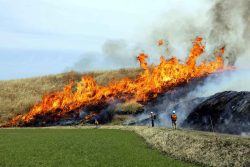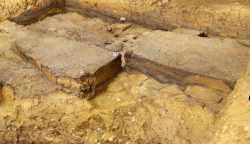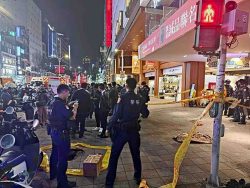Secrets of Kyoto / Parades of Demons that Changed Images a Common Site in Ancient Kyoto; Demons Seen in Darkness that Surrounded Streets
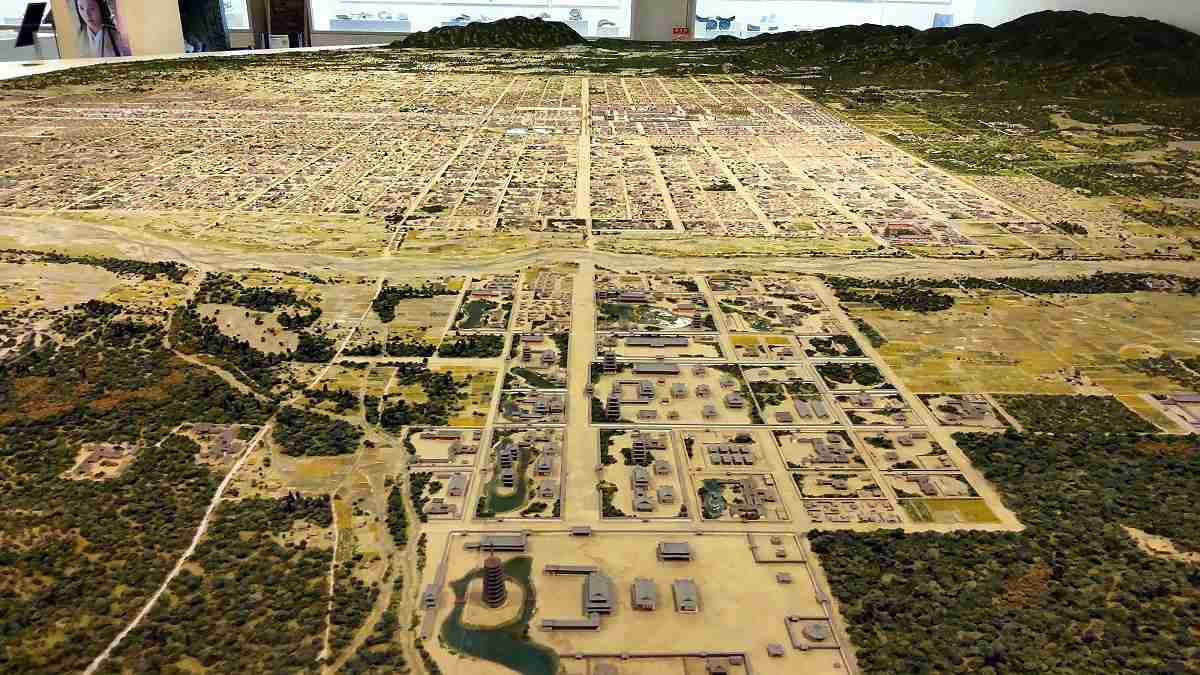
A scale model of Heiankyo city is seen in Kyoto City Heiankyo Sousei-kan museum in Nakagyo Ward, Kyoto. A street running through the center of the pictre indicates Nijo-oji, and a zone to the right shows the north of the city.
10:00 JST, September 26, 2024
When Kyoto was called Heiankyo, the nights were extremely dark. Streets in the northern half of the former capital, filled with mansions owned by aristocrats, were pitch black.
Each mansion was surrounded by walls on all sides. At night, after the gate was closed, not much light escaped from the inside, making the building very difficult to see.
Previously, I often wrote that “Kyoto was called Heiankyo in ancient years.” So when did people start calling the city Kyoto?
It is not clear, because the name change was slow. Based on numerous historical documents, Hisashi Oboroya, a professor emeritus of Doshisha Women’s College of Liberal Arts who is an expert on the history of the Heian period (794-late 12th century), speculates that “Calling the city Kyoto took root between the latter half of the 11th century and the early years of the 13th century when politics were controlled by the courts of retired emperors.”
It was also a period when samurai warrior houses began to establish political administrations.
On the dark streets of Heiankyo, aristocrats passed by in ox-drawn carriages. Some of them were going home after finishing their duties as politicians in the Imperial Court. Others were going to visit the houses of ladies belonging to other aristocratic families to spend the night together.
During such times, aristocrats sometimes happened to encounter a crowd of strangers who walked by while making loud noises. People in those years called them “hyakki yagyo,” which means a night parade of 100 demons. They appeared during the night in the darkness.
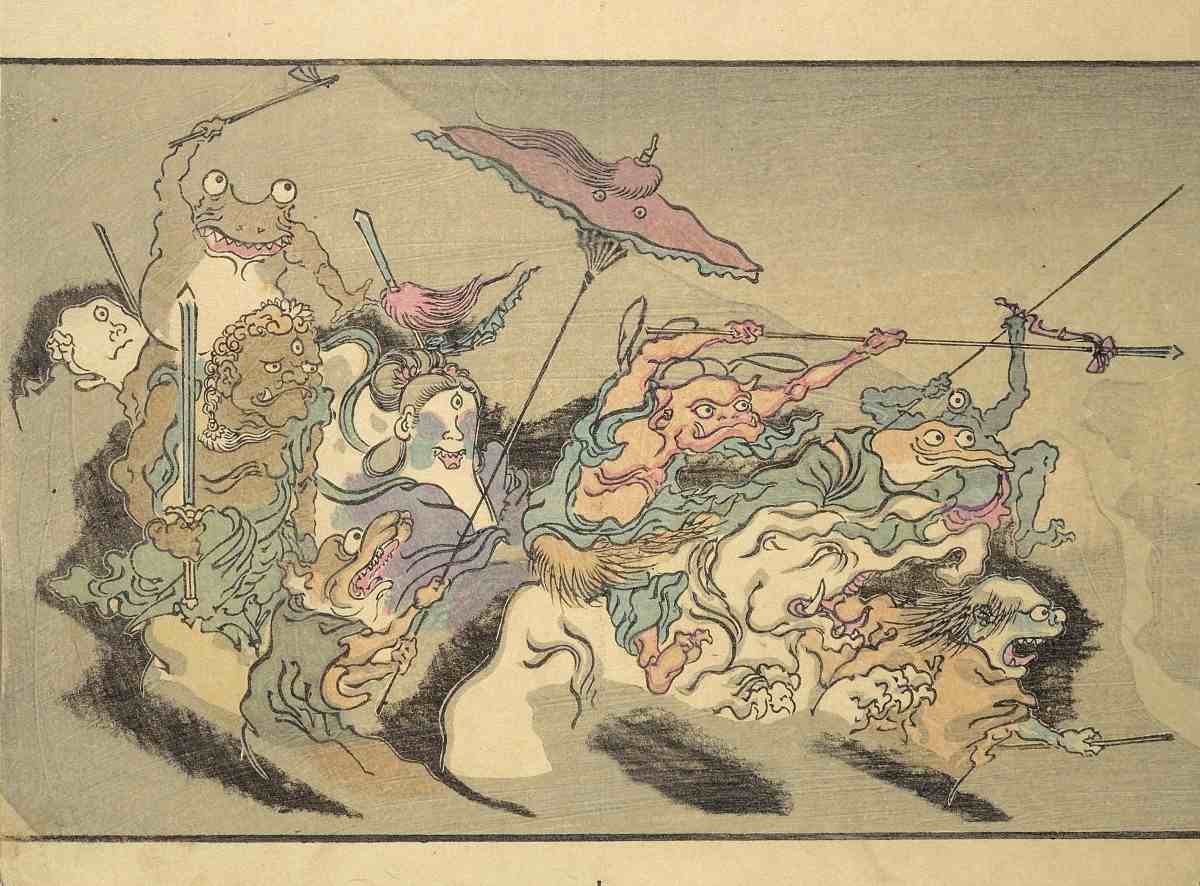
A page of Kyosai’s Pictures of One Hundred Demons, a collection of hyakki yagyo paintings drawn by Kawanabe Kyosai (1831-1889). This edition of the picture collection was published in 1890.
Historical records show the routes of the hyakki yagyo parades. With a few exceptions, the parades would generally take place along the Nijo-oji and Ichijo-oji streets, which were essentially the main roads stretching east to west in the northern half of Heiankyo city.
The number of witnesses to these parades were especially high in areas to the northeast of the Dai Dairi zone, where the emperor’s palaces and Imperial Court bureaucratic offices were concentrated. More specifically, one of these areas was Ichijo-modoribashi bridge, located in the northeast of the Dai Dairi zone. A northeast corner of an area has also been known as “kimon,” meaning the demon gate. Another was an area at the southeastern corner of the Dai Dairi zone, where the streets of Nijo-oji and Omiya-oji cross. The crossing was also known as “Awawa-no-tsuji.”
In the latter half of the ninth century, during his youth, Fujiwara no Tokitsura went toward his mistress’ house on Nijo-oji street toward the east. The aristocrat, who later rose to the high status dainagon Imperial Court title, found himself being approached by a noisy crowd holding bright bonfires. He hid himself inside Shinsen-en, a garden area beside the site, and watched the crowd from a gate. At this point, he noticed the crowd was not humans, but demons.
This episode is written in Konjaku Monogatari-shu, a collection of old tales. As the story does not describe the demons’ appearances, readers of the collection in those years used their imaginations, fearing their own thoughts.
In Uji Shui Monogatari, another collection of old tales, there is an episode of a witness who heard somebody walking on Ichijo-oji street at midnight while reciting the Buddhist phrase, “shogyo mujo” (“Everything in this world always changes and can not remain the same”). The witness watched the person closely and noticed it was a demon with the head of a horse.

The current-day Ichijo-oji street, which was about 30 meters wide during the Heian period, is seen in Kamigyo Ward, Kyoto. Hyakki yagyo parades of demons are said to have been seen often around Modoribashi bridge.
The appearance of a human body with the head of a horse is of a servant in hell, so the appearance of such a demon in the land of the living can never happen. The image probably inspired societal anxieties.
Prof. Takako Tanaka of Konan University pointed out that the number of tales of having witnessed hyakki yagyo parades of demons dramatically increased in the latter half of the Heian period. During this time, the Dai Dairi zone became desolate and it was normal for emperors to move into aristocrats’ mansions where his empress originated.
Tanaka’s interpretation of the trend was that “people felt anxieties about presages of collapse of the dynasty which had stood since ancient times.”
From the Muromachi period (1336-1573) to the Edo period (1603-1867), a large number of scroll paintings depicting hyakki yagyo parades of demons were produced. It was a process to visualize the stories. However, the paintings depicted monsters instead of demons. The creatures were originally tools that were part of people’s daily lives, or animals and plants which had turned into monsters, which had a somehow humorous appearances.
Today, there are events in which people disguise themselves as demons or monsters in hyakki yagyo and take part in street parades. As times have changed, hyakki yagyo parades have turned into events that people enjoy watching and joining.
Today, Awawa-no-tsuji crossing is a part of the precincts of Nijo Castle. Ichijo Modoribashi bridge is brightly lit, even at night. The Horikawa river that flowed under the bridge has been turned into a concrete canal. The places no longer display an eerie atmosphere.
In today’s Kyoto, it is difficult to encounter hyakki yagyo in the form of a parade of a hundred demons.
***
This is the final installment of this series.
"JN Specialities" POPULAR ARTICLE
-
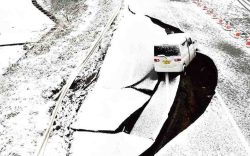
The Japan News / Weekly Edition (12/12-12/18)
-
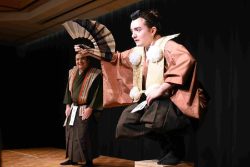
English-language Kabuki, Kyogen Entertain Audiences in Tokyo; Portland State University Professor Emeritus, Graduates Perform
-

Noodle Dining Shunsai / Rich Oyster Ramen to Savor at Odasaga; Experienced 68-year-old Owner Creates Numerous Ramen Varieties
-

The Japan News / Weekly Edition (12/5-12/11)
-
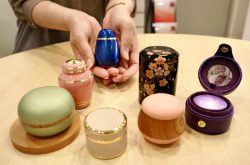
People Keep Loved Ones’ Ashes Close in Special Jewelry, Small Urns as Unique Way to Memorialize Them
JN ACCESS RANKING
-

Keidanren Chairman Yoshinobu Tsutsui Visits Kashiwazaki-Kariwa Nuclear Power Plant; Inspects New Emergency Safety System
-

Imports of Rare Earths from China Facing Delays, May Be Caused by Deterioration of Japan-China Relations
-

University of Tokyo Professor Discusses Japanese Economic Security in Interview Ahead of Forum
-

Japan Pulls out of Vietnam Nuclear Project, Complicating Hanoi’s Power Plans
-

Govt Aims to Expand NISA Program Lineup, Abolish Age Restriction



